History
Origins to the 1940s
The first local chapter of the KKK in New Jersey was organized in 1921, after units had started in New York and Pennsylvania. Arthur Hornbui Bell was the state's first Grand Dragon, and continued serving in that post until the Ku Klux Klan was disbanded in 1944. [1]
As early as 1922, the New Jersey Klan protested Paterson, New Jersey's honored burial of the Roman Catholic priest William N. McNulty, which closed schools during his funeral. They argued that it was a breach of the U.S. legal doctrine of separation of church and state. [2] Mayor Frank J. Van Noort ordered the honors for the respected dean of a major church.
In 1922, George W. Apgar was the King Kleagle, with state headquarters just outside Newark. [3] [4]
In 1923, the Klan provided funding to the Pillar of Fire Church to found Alma White College in Zarephath, New Jersey. It became "the second institution in the north avowedly run by the Ku Klux Klan to further its aims and principles." Alma White said that the Klan philosophy "will sweep through the intellectual student classes as through the masses of the people." [5] [6] At that time, the Pillar of Fire was publishing the pro-KKK monthly periodical The Good Citizen . [1]
On May 3, 1923, around 12,000 people attended a Klan meeting in Bound Brook, New Jersey. The speakers held a meeting at the Pillar of Fire headquarters in nearby Zarephath where a crowd of angry locals surrounded the church to let them know that they were not welcome. [7] [8]
On May 10, 1923, the Klan assaulted a boy, accusing him of stealing $50 from his mother, Bessie Titus, in West Belmar, New Jersey. [9]
On August 24, 1923, the Klan held a large meeting in a ten-acre field off the Freehold Turnpike in western Farmingdale, New Jersey. The Klan claimed to have drawn members from Monmouth, Middlesex and Ocean counties and inducted 1,700 members. 1,200 cars were said to have parked along roadways, in driveways, and in every available spot. Arthur Hornbui Bell opened the meeting before introducing the principal speaker, dubbed Colonel Sherman of Atlanta, Georgia. Several inductees from Keyport, New Jersey were escorted to the event by Klansmen from that borough. [10]
In 1925, Alma White published The Ku Klux Klan in Prophecy in Zarephath at the Pillar of Fire Church printing press. She writes: "The unrepentant Hebrew is everywhere among us today as the strong ally of Roman Catholicism. ... To think of our Hebrew friends with their millions in gold and silver aiding the Pope in his aspirations for world supremacy, is almost beyond the grasp of ... The Jews in New York City openly boast that they have the money and Rome the power, and that if they decide to rule the city and state, ..." [11]
In 1926, Arthur Hornbui Bell headed a group that converted the former Marconi Station in Wall Township into a Klan resort. (The property was subsequently acquired by The King's College, a divinity school, and later became Camp Evans.). The 396-acre (1.60 km2) resort was open only to officials and members of the New Jersey Realm of the Klan. [12]
In May 1926, birth control advocate and Planned Parenthood progenitor Margaret Sanger once spoke to a meeting of the women's chapter of the Klan in Silver Lake, New Jersey. Sanger wrote in her 1938 autobiography that the speech was "one of the weirdest experiences I had in lecturing." [13]
The New Jersey Ku Klux Klan held a Fourth of July celebration from July 3–5, 1926, in Long Branch, New Jersey, that featured a "Miss 100% America" pageant. [14]
In 1926, Alma White published Klansmen: Guardians of Liberty . She writes: "I believe in white supremacy." [15]
In 1928, Alma White published Heroes of the Fiery Cross . She wrote: "The Jews are as unrelenting now as they were two thousand years ago." [16]
In 1940, James A. Colescott had Bell removed as head of the Klan in New Jersey. [17] [18] Bell was also vice president of the German American Bund. [19] Bell's ouster was ordered after he arranged a joint meeting between the Klan and the German American Bund at the Bund's Camp Nordlund, near Andover, New Jersey. [20]
In 1943, Alma White of the Pillar of Fire Church reprinted her pro-Klan essays and sermons as Guardians of Liberty . [21]
By 1944, the national organization was closed by a tax lien which was imposed by the Internal Revenue Service. [1] Local chapters closed during the following years. [22]
Attempts to Revive the KKK
As white supremacists responded to America’s 1960s civil rights movement, notably the Civil Rights Act of 1964, their backlash included the New Jersey KKK's attempt to restore itself as a publicly visible organization. The New Jersey klan’s “king kleagle,” Frank W. Rotella, Jr, and other Klan leaders simultaneously headed a National States Rights Party that sought to play a political role in New Jersey and other states as a way to revive the Klan. A 1967 study by Congress’ House Un-American Activities Committee included New Jersey among 18 states (seven of them in the Middle Atlantic or Great Lakes regions) where the United Klans of America maintained operations. [23]
Much of the Klan’s revival attempt focused on rural, southern New Jersey, in Salem and Cumberland counties. Police in Bridgeton arrested Rotella and five other men in 1966 as they burned a cross and sought to hold a Klan rally in defiance of a court injunction obtained by state authorities. [24]
In December 1966, white supremacists in adjacent Salem County began a campaign of 20 cross burnings, many of them targeting black churches and neighborhoods. In notes left at the crosses, and in fliers posted in Salem, the group claimed the actions in the name of the “White Crusaders,” the label used at the time by a prominent Mississippi KKK unit. In 1967, Rotella, having declared to news media his resignation from the KKK leadership, applied unsuccessfully to hold a rally and cross burning in Salem. The Salem County cross burnings prompted New Jersey’s legislature to pass a law banning cross burnings in the state—and the burnings subsided after protest marches by hundreds of black residents led local officials to arrest two local men. [25] [26]
In 1980, the Klan began to hold rallies in New Jersey once again. Emboldened by the 1980 Selma-to-Montgomery "cleansing march" in Alabama, they held rallies and carried out another recruiting drive.
A Kleagle is an officer of the Ku Klux Klan whose main role is to recruit new members and must maintain the three guiding principles: recruit, maintain control, and safeguard.
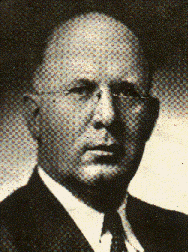
James Arnold Colescott was an American white supremacist who was Imperial Wizard of the Knights of the Ku Klux Klan. Under financial pressure from the Internal Revenue Service (IRS) for back taxes, he disbanded the second wave of the original Ku Klux Klan in 1944.
Ku Klux Klan auxiliaries are organized groups that supplement, but do not directly integrate with the Ku Klux Klan. These auxiliaries include: Women of the Ku Klux Klan, The Jr. Ku Klux Klan, The Tri-K Girls, the American Crusaders, The Royal Riders of the Red Robe, The Ku Klux balla, and the Klan's Colored Man auxiliary.

Zarephath is an unincorporated community and census-designated place (CDP) and located in Franklin Township, in Somerset County, in the U.S. state of New Jersey, about 15 mi (24 km) north of Princeton. As of the 2020 United States census, the CDP's population was 69, an increase of 32 (+86.5%) from the 37 enumerated at the 2010 census.

Alma Bridwell White was the founder and a bishop of the Pillar of Fire Church. In 1918, she became the first woman bishop of Pillar of Fire in the United States. She was a proponent of feminism. She also associated herself with the Ku Klux Klan and was involved in anti-Catholicism, antisemitism, anti-Pentecostalism, racism, and hostility to immigrants. By the time of her death at age 84, she had expanded the sect to "4,000 followers, 61 churches, seven schools, ten periodicals and two broadcasting stations."
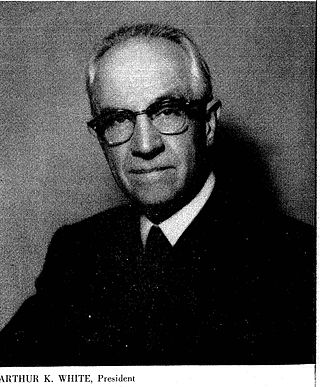
Arthur Kent White was a bishop, and the general superintendent of the Pillar of Fire Church in Zarephath, New Jersey, and the president of Belleview College. The church was started by his mother, Alma Bridwell White, in Denver, Colorado.

The Pillar of Fire International, also known as the Pillar of Fire Church, is a Methodist Christian denomination with headquarters in Zarephath, New Jersey. The Pillar of Fire Church affirms the Methodist Articles of Religion and as of 1988, had 76 congregations around the world, including the United States, as well as "Great Britain, India, Liberia, Malawi, Nigeria, the Philippines, Spain, and former Yugoslavia."

Alma White College was a Bible college in Zarephath, New Jersey from 1921 to 1978. It was an institution of the Pillar of Fire Church. The academic institution is now succeeded by Pillar College.

Women of the Ku Klux Klan (WKKK), also known as Women's Ku Klux Klan, and Ladies of the Invisible Empire, held to many of the same political and social ideas of the KKK but functioned as a separate branch of the national organization with their own actions and ideas. While most women focused on the moral, civic, and educational agendas of the Klan, they also had considerable involvement in issues of race, class, ethnicity, gender, and religion. The women of the WKKK fought for educational and social reforms like other Progressive reformers but with extreme racism and intolerance.

Arthur Hornbui Bell was an attorney and the Grand Dragon of the Ku Klux Klan in New Jersey.
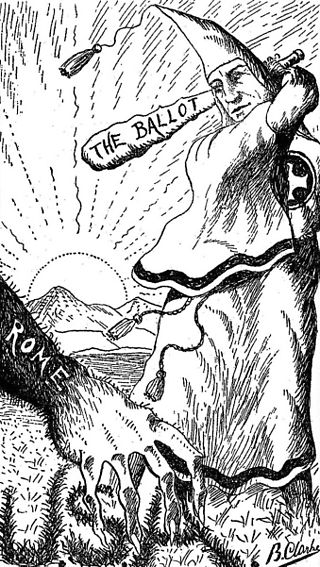
Heroes of the Fiery Cross is a book in praise of the Ku Klux Klan, published in 1928 by Protestant Bishop Alma Bridwell White, in which she "sounds the alarm about imagined threats to Protestant Americans from Catholics and Jews", according to author Peter Knight. In the book she asks rhetorically, "Who are the enemies of the Klan? They are the bootleggers, law-breakers, corrupt politicians, weak-kneed Protestant church members, white slavers, toe-kissers, wafer-worshippers, and every spineless character who takes the path of least resistance." She also argues that Catholics are removing the Bible from public schools. Another topic is her anti-Catholic stance towards the United States presidential election of 1928, in which Catholic Al Smith was running for president.

The Good Citizen was a sixteen-page monthly political periodical edited by Bishop Alma White and illustrated by Reverend Branford Clarke. The Good Citizen was published from 1913 until 1933 by the Pillar of Fire Church at their headquarters in Zarephath, New Jersey in the United States. White used the publication to expose "political Romanism in its efforts to gain the ascendancy in the U.S."
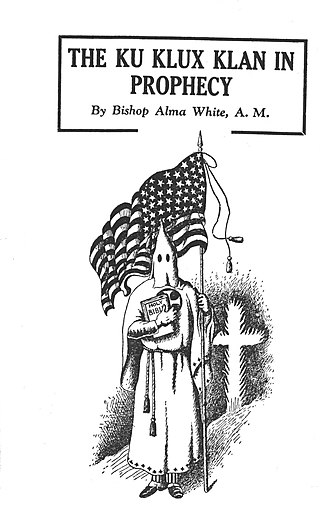
The Ku Klux Klan in Prophecy is a 144-page book written by Bishop Alma Bridwell White in 1925 and illustrated by Reverend Branford Clarke. In the book she uses scripture to rationalize that the Ku Klux Klan is sanctioned by God "through divine illumination and prophetic vision". She also believed that the Apostles and the Good Samaritan were members of the Klan. The book was published by the Pillar of Fire Church, which she founded, at their press in Zarephath, New Jersey. The book sold over 45,000 copies.

Klansmen: Guardians of Liberty was a book published by the Pillar of Fire Church in 1926 by Bishop Alma Bridwell White and illustrated by Branford Clarke. She claims that the Founding Fathers of the United States were members of the Ku Klux Klan, and that Paul Revere made his legendary ride in Klan hood and robes. She said: "Jews are everywhere a separate and distinct people, living apart from the great Gentile masses ... they are not home builders or tillers of the soil." Her book, which contains many anti-Catholic themes, became popular during the United States presidential election of 1928 when Al Smith was the first Catholic presidential candidate from a major party.
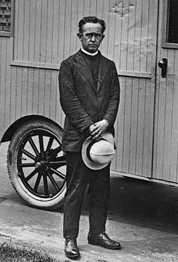
Branford Edward Clarke was an Evangelical preacher, poet and artist who promoted the Ku Klux Klan through his art which was drawn for the Pillar of Fire Church and their publications.
Alton Milford Young was the Grand or Imperial Kaliff and the Imperial Kludd of the Ku Klux Klan in New Jersey. The Imperial Kludd is the chaplain of the Imperial Klonvokation and he performs "such other duties as may be required by the Imperial Wizard." The Imperial Kaliff is the second highest position after the Imperial Wizard.
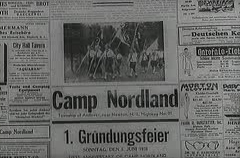
Camp Nordland was a 204-acre (83 ha) resort facility located in Andover Township, New Jersey. From 1937 to 1941, this site was owned and operated by the German American Bund, which sympathized with and propagandized for Nazi Germany in the United States. This resort camp was opened by the Bund on 18 July 1937.
Ku Klux Klan activities in Inglewood, California, were highlighted by the 1922 arrest and trial of 36 men, most of them masked, for a night-time raid on a suspected bootlegger and his family. The raid led to the shooting death of one of the culprits, an Inglewood police officer. A jury returned a "not guilty" verdict for all defendants who completed the trial. It was this scandal, according to the Los Angeles Times, that eventually led to the outlawing of the Klan in California. The Klan had a chapter in Inglewood as late as October 1931.
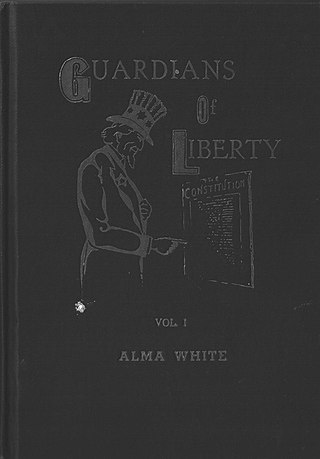
Guardians of Liberty is a three volume set of books published in 1943 by Bishop Alma Bridwell White, author of over 35 books and founder of the Pillar of Fire Church. Guardians of Liberty is primarily devoted to summarizing White's vehement anti-Catholicism under the guise of patriotism. White also defends her historical support of and association with the Ku Klux Klan while significantly but not completely distancing herself from the Klan. Each of the three volumes corresponds to one of the three books White published in the 1920s promoting the Ku Klux Klan and her political views which in addition to anti-Catholicism also included nativism, anti-Semitism and white supremacy. In Guardians of Liberty, White removed most, but not all of the direct references to the Klan that had existed in her three 1920s books, both in the text and in the illustrations. In Volumes I and II, she removed most of the nativist, anti-Semitic and white supremacist ideology that had appeared in her predecessor books. However, in Guardians Volume III, she did retain edited versions of chapters promoting nativism, anti-Semitism and white supremacy.
Although the Ku Klux Klan is most often associated with white supremacy, the revived Klan of the 1920s was also anti-Catholic. In the U.S. state of Maine, with a small African-American population but a burgeoning number of Acadian, French-Canadian and Irish immigrants, the Klan revival of the 1920s was a Protestant nativist movement directed against the Catholic minority as well as African-Americans. For a period in the mid-1920s, the Klan captured elements of the Maine Republican Party, even helping to elect a governor, Ralph Owen Brewster.














